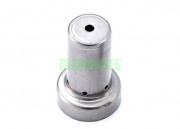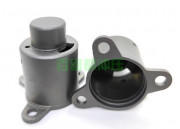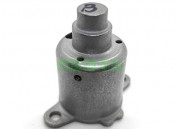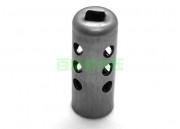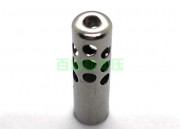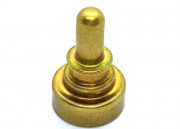What are the common quality problems of stamping and drawing parts processed by stamping dies?
1. During the stretching process of the wrinkled material, the tangential stress of the surrounding edge part is too large, which causes the instability of the material and causes the product to form uneven wrinkles along the tangential direction of the edge, which is called wrinkling. When the wrinkling is serious, it will also cause the material to be difficult to pass through the gap between the die and the punch during the stretching process, the tensile deformation force will increase, and even lead to cracking. The occurrence of buckling depends not only on the tangential stress at the edge of the material, but also on the thickness of the tensile member. Generally speaking, the stretching die using nitrogen gas spring or excellent release glue has better effect, and it is not easy to appear wrinkling, cracking and other phenomena. Why? Since the force of the nitrogen gas spring or super glue is generally balanced, there is no problem of uneven force. Nitrogen gas springs are better than Uniglue, because the nitrogen springs have strong force and good balance, but the price is several times more expensive than Uniglum, and many factories cannot afford them. Generally, only slightly larger factories can afford to use gas springs. If you use it for a long time, the super glue will shrink and its strength will not be as strong as it used to be. You’ll have to get a new one, but it’s a lot less expensive than a gas spring. The blank holder ring can be used to prevent wrinkling. In some places, it is called a pressing rib, which means that a circle of raised ribs is placed around the material without affecting the post-processing of the product, commonly known as a pressing rib, to press the material. Around. The advantage of this is that the stretched product will be fuller and will also prevent wrinkling.
The blank holder force needs to be relatively adjusted in the mold test. The general design is not so reasonable, and the height of the blank holder needs to be adjusted appropriately according to the specific conditions of the product. If the blank holder force is too large, the friction between the material and the die and the blank holder ring will increase, which will make the material wall thinner or even cracked; if the blank holder force is too small, it cannot effectively prevent wrinkling. .
Second, the second problem is pulling crack, which is a problem often encountered in the stretching process. When the tensile stress on the cylinder wall exceeds the strength limit of the material, the product will crack, and the crack generally occurs at the cylinder wall slightly above the punch fillet.
The factors that affect the deep drawing crack of the product are: the tensile properties of the material, the diameter and thickness of the material, the drawing coefficient, the fillet radius of the concave and convex die, the blank holder force, the friction coefficient, etc. The radius of the rounded corner of the concave and convex die is too small and too sharp, which is easy to cause the product to crack. The general mold repair method is to find a way to increase the rounded corner to make the rounded corner smoother and brighter. Yes, especially stretching oils, are very effective. When designing the stamping die, you can enlarge the fillet as far as the customer’s product allows. Don’t make it too sharp. Some designs are not well understood. The designed drawing die cracked very badly during the die test, and wanted to exhaust the fitter. what! Repairing molds is annoying.
The use of necessary lubricants during stretching is conducive to the smooth progress of the stamping and stretching process and improves the thinning degree of the cylinder wall. But it must be noted that the lubricant can only be applied to the working surface of the die, and cannot be lubricated on the contact surface of the punch and the material, because the punch and the blank surface are a kind of favorable friction, which can prevent Material slips, cracks and thins.
Read More →




